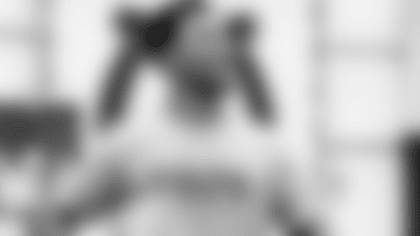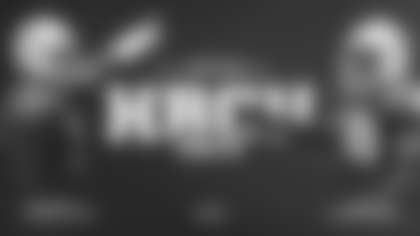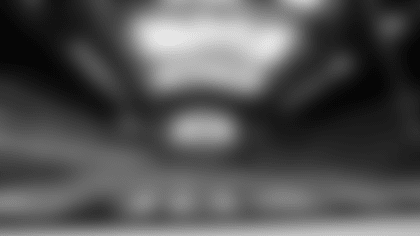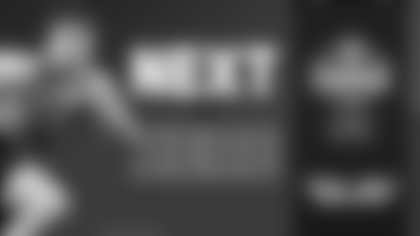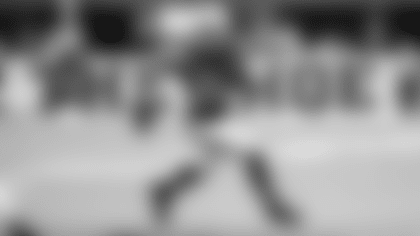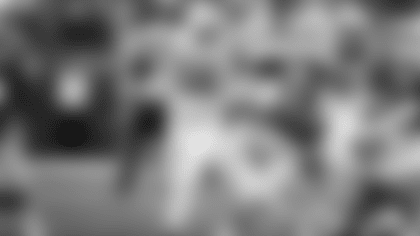INDIANAPOLIS —In 2013, the Dallas Cowboys decided to make the switch from a 3-4 to a 4-3 base defense in an effort to try to get more speed on the field.
The immediate results weren't exactly ideal, as the Cowboys that initial season ranked dead last, 32nd, in the league in total defense.
But the defensive staff's persistence started to pay off from there.
In 2014, the team ranked 19th in total defense; in 2015, the team ranked 17th. The next season, when the Cowboys finished 13-3 and won the NFC East Division title, their defense ranked a respectable 14th.
And then, finally, last season: an eighth-place finish.
Yeah, it took some time, but the proof was in the pudding that the transition could be successful.
Now with the Indianapolis Colts, Matt Eberflus hopes to make the same kind of impact as the team's new defensive coordinator. The Colts played in a 3-4 from 2012 through 2017 under previous head coach Chuck Pagano, but new head coach Frank Reich was all about Eberflus' plan to go back to the 4-3 moving forward.
Eberflus, who coached in Dallas during that transition as their linebackers coach, and later added defensive passing game coordinator to his list of responsibilities, knows first-hand how the change should go down. He said he's been meeting with Reich and general manager Chris Ballard about getting the right personnel in place to make such a switch.
"We have to make that switch with the personnel first, and with Frank, with Chris, we'll talk about all those different shifts — guys moving from outside backer to defensive end; the D-tackles, the nose tackle, where are we going to put those guys, and all that," Eberflus said Tuesday during the Colts' second annual Town Hall meeting. "So that's the first shift that you have to talk about, and we're going through that process right now."
The switch to the 4-3 means the Colts will add a defensive lineman and have one fewer linebacker. In general, outside linebackers formerly in the 3-4 will transition to defensive end — with a primary focus on rushing the passer and stopping the run — while the 4-3 calls for its linebackers to have the ability and speed to be solid in coverage, but also the instincts and power to stuff plays at the line of scrimmage.
In the back end, Reich and Ballard have discussed utilizing a Tampa 2 coverage scheme, in which two cornerbacks and two safeties are responsible for various zones, while the linebackers — particularly the middle linebacker — are also heavily depended upon to impede upon the opposing pass catchers.
"That Tampa 2 defense, it's just a really proven, test-of-time scheme where it can create plays," Reich said this week in an interview on Sirius XM radio. "I'm really into pressure with four men and let the defense play. It's a little bit of bend-but-don't-break. It's a unique coverage that not as many teams run and the teams that run it don't run it as well as the pure Tampa Bay (Cover 2) teams."
For the Colts, the defensive change represents a switch back to the first decade of the 2000s, when Dwight Freeney, Robert Mathis, Bob Sanders, Gary Brackett and crew had success in the 4-3/Tampa 2 under head coach Tony Dungy.
For the current crop of Colts players — particularly those immediately affected by the switch — going to the 4-3 represents a fresh start for a unit that ranked 30th in total defense in 2017.
"I think it benefits guys who play with a lot of effort. And I think we have a lot of guys on our squad who are able to do that, and it's shown to work in the past in these types of attacking defenses — penetrating defenses," said John Simon, who could make the switch from outside linebacker to defensive end in Indy's new defense. "It requires a lot of running, a lot of guys who are in shape, and like I said, I think we've got a lot guys who did that. And as (Johnathan Hankins) said, we're very excited for this opportunity and can't wait for OTAs and minicamp."
Likewise, Eberflus is excited to get going with his new defensive unit.
"Really the major shift is that we want athletic, speed players that possess quickness, instincts and striking ability," he said. "And you should see that on the field. So you're going to see more speed, more quickness, more athletic ability, and those are the guys that we're going to want to acquire through the draft, through free agency, and those will be the type of players that we have on our team. So that's the major shift that you'll see."





